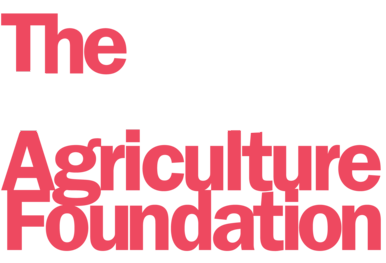Setting and Maintaining Boundaries for Your Mental Health
December 23, 2020
By Lesley Kelly, Farmer and Co-Founder of the Do More Agriculture Foundation
Our personal boundaries aren’t as obvious as some of the boundaries we have on the farm, like a tree line protecting the farm from the wind, a fence keeping livestock in, or a “no trespassing” sign at an approach. Personal boundaries are more like invisible bubbles that are different for everyone.
Even though personal boundaries can be challenging to navigate and at times uncomfortable, setting and communicating them is essential for our health, well-being, and even our safety, especially during the current environment of a global pandemic when we need to protect our mental and emotional well-being the most.
Boundaries are your own personal limits and guidelines and can be considered as a gentle partition between our needs and the needs of others. “Setting and sustaining boundaries is a skill and a critical one,” says Jan Thorson, Acting Executive Director of Mobile Crisis Saskatchewan. “Boundaries give us permission to say ‘no’ to things that we don’t wish to do, that make us uncomfortable or impact our self-esteem. Setting boundaries allows us to remain true to ourselves and our ethical beliefs.”
Here are a few examples of types of boundaries:
Physical Boundaries - A physical boundary addresses the space around you. When you feel your personal space is being violated, this can make you feel uncomfortable and anxious. Being clear and firm about what is allowed in your physical space can be the difference between you feeling safe or not.
Emotional Boundaries - An emotional boundary refers to the internal, emotional experience. These boundaries may be pushed or crossed when we take and accept responsibility for another's feelings and actions, letting another's feelings dictate our own and sacrificing our own needs to please another.
Mental Boundaries - Mental boundaries refer to your personal thought process. Always seeing eye-to-eye with another person is not possible. Everyone has different experiences, but you have the right to your own thoughts, values, beliefs and opinions. It is important to give and receive respect when it comes to mental boundaries.
Time and Energy Boundaries – Setting boundaries for your time and energy are also a necessity. Time and energy boundary violations can look like being kept in a conversation longer than you planned, being requested from your boss to do more work without pay, or someone showing up significantly later than agreed upon without clearly communicating.
Material Boundaries - Material boundaries refer to personal possessions and the limits on how your items are treated, or when they can or cannot be used. If your things are being touched, or used without your permission, being stolen or destroyed then your material boundaries are in clear violation. It is your decision who you are comfortable sharing with, or if you don’t want to share at all.
It’s important to keep in mind that setting and honouring your boundaries and others’ isn’t textbook science. Boundaries can vary from person to person, and having open and honest conversations about them is crucial.
Whether you want to set clearer rules with your family, team or assert your space when it comes to strangers, here’s a few tips on how to get started:
Understanding your needs, limits and values: The first step in setting boundaries is to know where your limits are. What do you need emotionally, mentally, physically? Are these needs being met? Are some situations putting your body and mind under unnecessary stress? Do some people treat you in ways you wouldn’t treat them? Be honest with yourself and have some clear lines in place with yourself, so even if you can’t set them first-time round, you know where you want to establish a boundary.
Focus on yourself and your rights: We can’t change others, their actions nor is it our responsibility. Boundaries help change the situation for you. We can focus on what is within our control such as our boundaries, actions, behaviors, and thoughts.
We all have rights, and it’s learning which ones are more important to you that will also help set your boundaries, such as:
I have the right to say no, without feeling guilty
I have the right to be treated with respect (by both myself and others
I have the right to make my needs as important as other people’s
I have the right to accept my mistakes without being hard on myself
I have the right not to meet unreasonable expectations other people may have of me
Verbalize your concern and intention: Personal boundaries teach others how we want to be treated. When we are able to communicate our needs in a way that is clear and direct, we can feel confident that we are treating the other person fairly even if they do not agree with our decisions. It is important that our intentions are consistent with our values and are reflective of our personal needs as well.
Practice Self-Care: Boundaries are a form of a self-care. When you set boundaries, you are taking care of yourself. Practicing healthy self-care habits allows you to recharge your batteries for yourself and those around you.
Setting and maintain boundaries can be difficult. If you need help, reach out for mental health support by visiting Do More Ag resources.
The Do More Agriculture Foundation is not intended to be a substitute for professional medical advice, diagnosis, or treatment. If you are in crisis, please visit your local emergency department or call 911 immediately.

